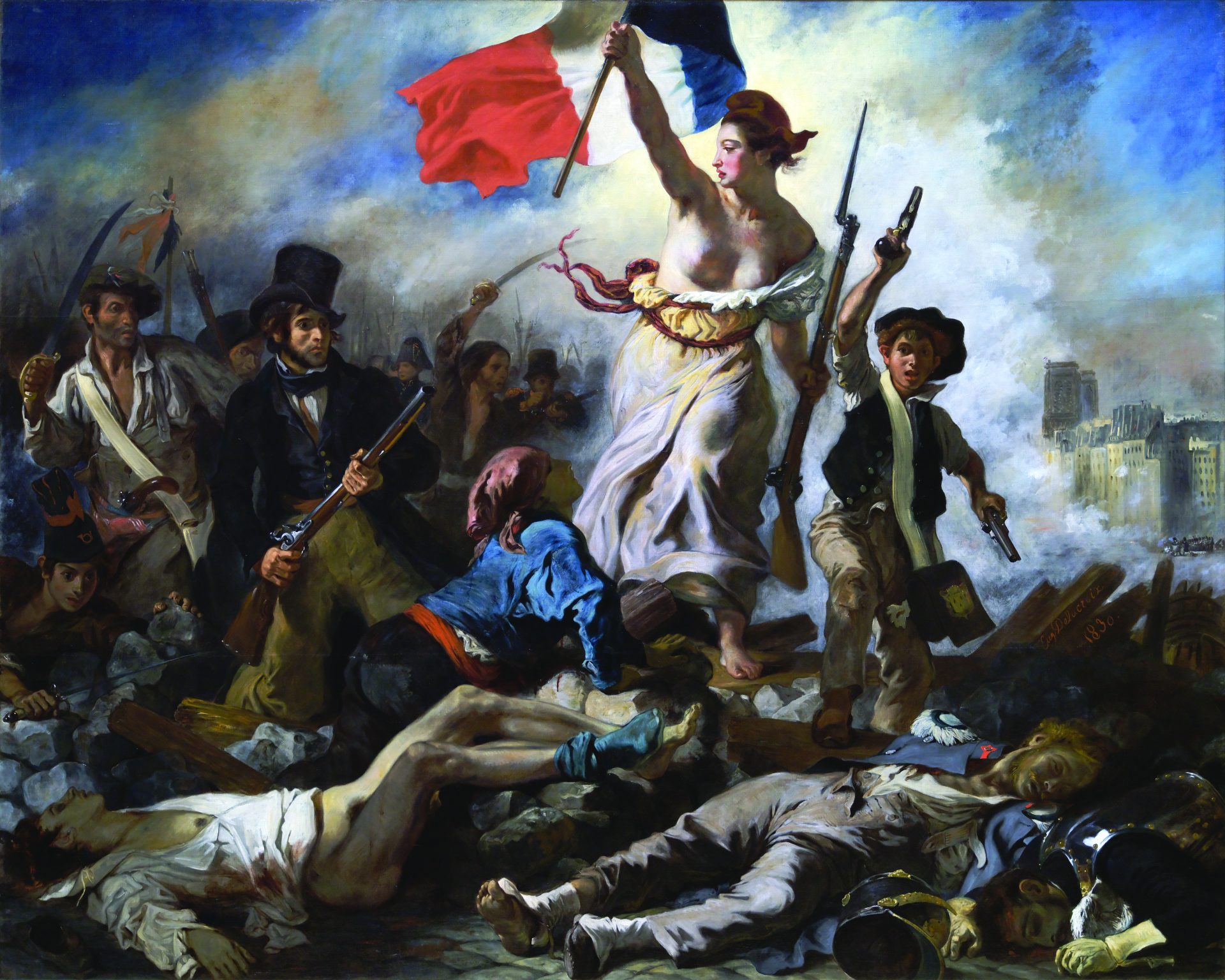
Near the end of this thick volume, the fourth in his celebrated saga of Lyndon Baines Johnson, Robert A. Caro describes the War on Poverty as the most sincere and boldest initiative of a normally cynical and utterly practical politician. It did not matter that LBJ’s advisers warned him the plan to uplift the nation’s forty to fifty million poor would gain him no additional votes in the next election. “That’s my kind of program,” the new president insisted just a day after he took office in late November 1963. “I’ll find money for it one way or another.”
As was typical of the man, a personal motivation led him to take a political stand. Caro recounts how, at the age of nine, Johnson had to pick cotton in the summer heat of central Texas and wore patched clothing after his father’s ranch went bankrupt. LBJ “hated poverty and illiteracy,” a childhood friend remembered. “He hated it when a person who wanted to work could not get a job.” So passionate was Johnson about the issue that he doubled, to a billion dollars, the annual amount his budget writers had earmarked for the “unconditional” War on Poverty and made the program the centerpiece of his first State of the Union address, which he delivered in January 1964. It was, gushes Caro, “a program with goals so new and ambitious that it was necessary to go back to Franklin Roosevelt’s New Deal to find, perhaps not an equal, but at least a comparison.”
This lengthy section demonstrates what makes Caro’s uncompleted series of LBJ biographies both sublime and somewhat exasperating. No contemporary historian of American politics, academic or journalistic, piles up the pertinent details of a famous life—quotations, anecdotes, observations on how an individual spoke, moved, even laughed—as Caro can. And no other writer is so deft at using those details to evoke the personal drama of a public event. Slowly and vividly, Caro leads you to understand how deep was Johnson’s concern for the poor—and how this master in the ways of Congress seized an opportunity to do something big about it. But the biographer neglects to mention that the assault on poverty turned out to be more of a flanking skirmish than a war, much less “a vast, revolutionary transformation.” A billion dollars was less than one-fifth what, under FDR, the Works Progress Administration had allocated in 1935 to create jobs for millions of Americans. Taking three decades of inflation into account, it was really more like one-tenth of that amount.
And LBJ’s strategy for attacking poverty was as indirect as it was inexpensive. Most of the funding went to local “action” agencies whose mission was to give the poor responsibility for deciding which mix of small federal grant programs would best help their communities. The “war” was never intended to transfer income or create jobs. Nevertheless, it drew the ire of Democratic mayors, whose power was challenged by the new agencies, and of conservatives, who ridiculed Johnson’s initiative as just another form of welfare. When Richard Nixon became president, most of the poverty program was abolished. The most telling points of comparison with the New Deal are that FDR’s policies to aid the disadvantaged were quite popular, and that Social Security, the most ambitious one, has endured.
Context is an essential tool for explaining why history seldom lives up to the desires of individual actors, be they presidents or peons. The state of an economy, the balance of political forces, the vagaries of popular culture—all set limits and create opportunities. But the only contexts that Caro really pays attention to in this volume, which covers the years from 1958 to 1964, are the relationships LBJ had with other powerful men—cooperative, begrudging, humbling, hostile, and/or satisfying relationships, in every variation.
Fortunately, Caro has a formidable group of characters to place in motion around (and often against) his protagonist during a period stuffed with riveting events—from the 1960 campaign to the Cuban Missile Crisis to an assassination seen all over the world to the triumphant transition that followed. The key supporting actor, of course, was John F. Kennedy, whom LBJ had dismissed as a lazy scion of privilege until JFK beat him out, rather easily, for the 1960 Democratic presidential nomination. Kennedy then asked Johnson to be on the ticket, knowing Texas would be critical to gaining an electoral majority. As horrible as it was, JFK’s murder three years later also delivered Johnson from the impotence of the vice presidency.
When LBJ moved into the White House, there were two fellow senators from Dixie whom he had to cajole and seduce to do his bidding. Harry Byrd, the genteel boss of conservative Virginia, ran the Senate committee through which a tax cut vital to economic recovery had to pass before it could reach the floor of the upper chamber. Senator Richard Russell from Georgia, once an LBJ mentor, had to be tricked into serving on the Warren Commission, charged with investigating Kennedy’s assassination, because the panel was headed by the chief justice who had authored the opinion in Brown v. Board of Education. That ruling, of course, launched the legal demolition of Jim Crow that Russell had long feared. Then there was Bobby Baker, Johnson’s protégé and jack-of-all-fixes, whose years of influence peddling and secret profit making drew the attention of congressional investigators and the national press, and thereby threatened to blow up LBJ’s career, just as the vice president was joining the motorcade on that fateful November day in Dallas. And finally there was Bobby Kennedy, a ruthless yet compassionate figure whose every interaction with Johnson was stained by their deep and mutual hatred. In Caro’s view, the bitter Bobby-LBJ rivalry had “far-reaching influence . . . not merely on their party but on the course of American history.”
That abiding enmity adds pepper to one of Caro’s characteristically impressive set pieces. Bobby’s older brother offered the vice-presidential nomination to LBJ on the morning of July 14, 1960, at the Biltmore Hotel in Los Angeles. The decision surprised nearly all of JFK’s advisers, of whom Bobby was the closest. Caro, one of the more meticulous researchers on the planet, describes in minute, cinematic strokes “the drama that was to consume the rest of the day.” Aides to both principals darted in and out of hotel suites two floors apart, while Johnson loyalists and Kennedy liberals denounced the deal before both camps acquiesced to its electoral wisdom. Only Bobby refused to accept the decision until the moment when campaign officials announced it to the press. At one point, he tried to convince Johnson to become chairman of the Democratic National Committee instead, a consolation prize so trivial, under the circumstances, that it might have been pulled from a Cracker Jack box. “My God,” wailed Bobby, when the deed was done, “this wouldn’t have happened except that we were all too tired last night.”
Yet the import of this story is less than the sum of its dramatic moments. After all, JFK had made the offer, and LBJ wanted to accept it, in part because he believed the country was not ready to elect a southerner at the top of the ticket. No politician from Dixie had won the White House since Zachary Taylor in 1848. Thus, all the anxious conversations in the suites and the hallways that afternoon and evening had little or no bearing on a decision that had already been made that morning by “two very tough, very smart men.”
Caro employs the same careful, colorful method of historical reconstruction at other key junctures. His narrative of Johnson’s actions on the day of JFK’s murder brilliantly captures Johnson’s transformation from a depressed, whiny underling with nothing much to do into the self-confident, resourceful leader of the most powerful nation in history. Although, according to the Constitution, LBJ had become president the instant Kennedy died, he understood that to take the oath with Jackie by his side would provide graphic evidence of an orderly transfer of power. Let Caro describe what it felt like inside Air Force One just a few hours after the bloodshed in Dealey Plaza:
The scene was still eerie: the gloom, the heat, the whispering, the low, insistent whine of the jet engine, the mass of dim faces crowded so close together. But one element had vanished: the confusion. Watching Lyndon Johnson arrange the crowd, give orders, deal with O’Donnell and O’Brien [JFK’s aides], Liz Carpenter [Lady Bird’s secretary], dazed by the rush of events, realized that there was at least one person in the room who wasn’t dazed, who was, however hectic the situation might be, in complete command of it. . . .“You had the feeling that things were well in hand.”
Alas, the biographer’s historical insights seldom match his talents as a storyteller. What do we learn about LBJ from the events in Dallas? It’s hardly a surprise that, once he’d achieved the goal he had hungered for since childhood, he was free, at least for a while, from his insecurities and fears of failure. Caro goes on to chronicle how quickly, as president, Johnson was able to persuade most of Kennedy’s men, the Congress, and the country at large that he was determined to advance JFK’s domestic agenda. Less than four months after the assassination, LBJ’s approval rating soared to more than 70 percent. But Caro never weighs how much of this rise was due to a context that would have made even a mediocre politician look good: a healthy economy, dominance abroad (Vietnam was not yet a major issue), faith in liberal governance, and the public’s good feelings for the man who succeeded a martyred hero.
In his introduction, Caro sets forth the lofty goals of the work to which he has devoted, so far, more than thirty years and several thousand pages: “to explore, through the life of its protagonist, the acquisition and use of various forms of [political] power during [a] half century of American history, and to ascertain also the fundamental realities of that power; to learn what lay, beneath power’s trappings, at power’s core.” Unfortunately, what he finds at the core reveals more about the personalities of the mighty than about how they understood and used their power.
That does not diminish Caro’s greatness as a biographer. Lyndon Johnson was a figure of immense gifts and horrendous flaws, and I doubt any writer will ever capture the arc of his triumphant and ultimately tragic life so well again. As LBJ typically did in his famous “treatment,” which cornered a man with humor, scorn, argument, and flattery until he gave in, Caro wears down and finally destroys whatever reluctance a more analytical mind may have to his pointillist invocations of drama and personality. At one point, midway through the delicious narrative of a state dinner/barbecue LBJ hosted in a small Texas town for the visiting chancellor of West Germany, Caro writes:
There was a Mexican mariachi band, square dances by the Billyettes, a precision dance team (not all that precise) from Fredericksburg High School and then German carols sung by cowgirls—the St. Mary’s High School choir in full cowgirl regalia: Stetsons, blue skirts, white blouses and red neckerchiefs—under the direction of a nun in head-to-toe black habit. They closed with “Deep in the Heart of Texas”—and that was in German too.
All that lies ahead in volume 5 is the brutal debacle in Indochina, the fall of the Great Society, and LBJ’s humiliating exit from the White House. I can’t wait to read it.
Michael Kazin’s latest book is American Dreamers: How the Left Changed a Nation (Knopf, 2011). He teaches history at Georgetown University and is coeditor of Dissent.






